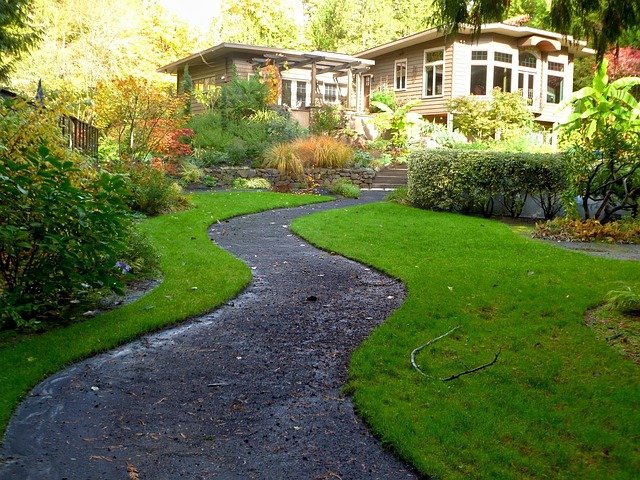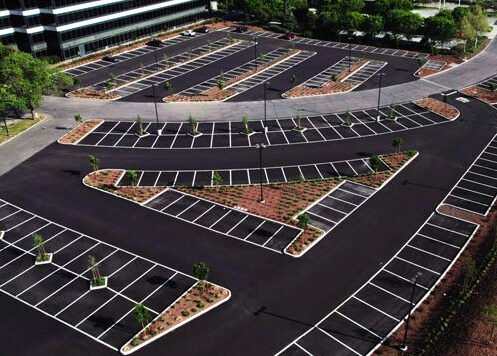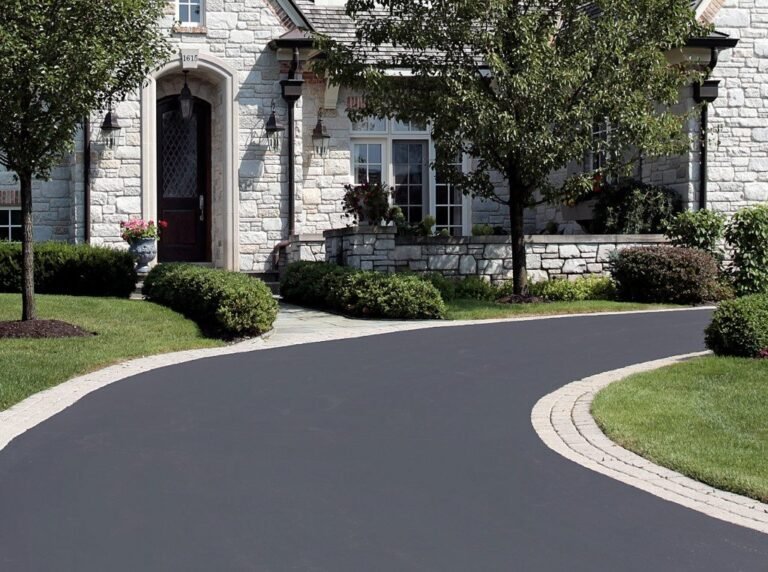Asphalt for Farm Lanes and Rural Roads: Cost Guide & Benefits Analysis 2025
Asphalt for farm lanes and Rural Roads has become an increasingly popular choice among agricultural property owners seeking durable, long-lasting road solutions. Modern farmers and rural landowners are discovering that paving farm roads with asphalt offers significant advantages over traditional gravel surfaces, from reduced maintenance costs to improved year-round accessibility.
TOC
ToggleThis comprehensive guide examines everything you need to know about rural road paving, including detailed asphalt cost calculations, installation considerations, and maintenance requirements. Whether you’re managing a working farm, rural residence, or commercial agricultural operation, understanding the benefits and challenges of farm lane construction will help you make an informed investment decision.
Agricultural road construction has evolved significantly, with asphalt emerging as a preferred material for high-traffic farm lanes and main access roads. The initial investment in asphalt paving costs often pays dividends through reduced long-term maintenance and operational benefits that improve overall farm efficiency.
Understanding Asphalt Options for Rural Applications
Types of Asphalt Suitable for Farm Use
- Hot Mix Asphalt (HMA) represents the premium choice for farm driveway paving. This material is produced at temperatures between 300-350°F and provides exceptional durability for heavy agricultural equipment. HMA works exceptionally well for main access roads and high-traffic areas where heavy equipment roads require maximum load-bearing capacity.
- Cold Mix Asphalt offers a more economical alternative for rural road construction projects with budget constraints. While not matching the longevity of hot mix, cold mix asphalt provides adequate performance for secondary farm roads and areas with moderate traffic volumes.
- Recycled Asphalt Pavement (RAP) delivers an environmentally conscious solution for sustainable farm infrastructure. These reclaimed materials from existing roadways can be compacted to create stable surfaces at significantly reduced costs compared to virgin asphalt materials.
- Chip Seal Applications combine asphalt emulsion with aggregate chips to create surfaces more durable than gravel but less expensive than full asphalt road construction. This option provides excellent value for farm lanes requiring improved traction and dust control solutions.
Key Differences from Urban Road Construction
Rural asphalt applications differ significantly from urban construction projects. Farm lanes typically experience lower daily traffic volumes but must accommodate much heavier loads from agricultural machinery, including loaded grain trucks, combines, and equipment that can exceed 80,000 pounds.
Weather exposure presents unique challenges for farm road maintenance. Rural roads often lack comprehensive storm drainage systems, making proper grading and drainage solutions critical for long-term asphalt performance. Additionally, rural road durability depends heavily on addressing temperature fluctuations and extended periods between professional maintenance cycles.
Comprehensive Benefits of Farm Lane Asphalt
Superior Durability and Longevity
Asphalt durability for farm applications typically provides 15-25 years of service life with proper installation and maintenance. This long-term road investment significantly outlasts gravel surfaces that may require annual rehabilitation and aggregate replacement.
The weather resistance of professionally installed asphalt makes it invaluable for all-weather farm access. Unlike gravel roads that develop ruts and become impassable during wet conditions, asphalt maintains structural integrity and provides consistent vehicle access regardless of seasonal weather patterns.
Immediate Practical Benefits
- Dust-free farm roads represent one of the most noticeable improvements after asphalt installation. This enhancement improves air quality around farm buildings, reduces equipment maintenance requirements, and creates healthier working environments for farm personnel and livestock.
- Reduced road maintenance becomes apparent immediately after installation. While asphalt requires periodic attention, it eliminates the need for regular grading, pothole filling, and aggregate replacement that characterizes gravel road maintenance schedules.
- Improved farm accessibility ensures reliable access for emergency vehicles, delivery trucks, and service providers. This becomes particularly critical during adverse weather when weather-resistant roads maintain their integrity and usability.
- Equipment preservation occurs naturally on smooth asphalt surfaces, reducing wear on vehicle tires, suspensions, and drivetrain components. This translates to lower farm equipment maintenance costs and extended machinery life across your entire fleet.
Economic Advantages of Asphalt Investment
- The return on investment for asphalt paving often becomes apparent within 10-15 years through reduced maintenance costs. While gravel roads require annual maintenance averaging $1,000-$2,000 per mile, asphalt maintenance costs typically range from $200-$500 per mile annually after initial curing.
- Fuel efficiency improvements on smooth asphalt surfaces provide ongoing operational savings, particularly for farms with significant truck traffic. Research indicates vehicles operating on well-maintained asphalt consume 10-15% less fuel compared to rough gravel surfaces.
- Property value enhancement represents an additional economic benefit, with paved access roads potentially increasing rural property values by 5-15%. This makes the asphalt investment partially recoverable through increased property equity.
Environmental and Operational Benefits
- Environmental benefits include significant dust reduction, improved air quality, and better water runoff management. Properly designed asphalt surfaces direct water flow in controlled patterns, preventing erosion and protecting local water sources.
- The recyclability of asphalt supports sustainable farming practices. At the end of its service life, asphalt materials can be reclaimed and reused in new construction projects, reducing environmental impact.
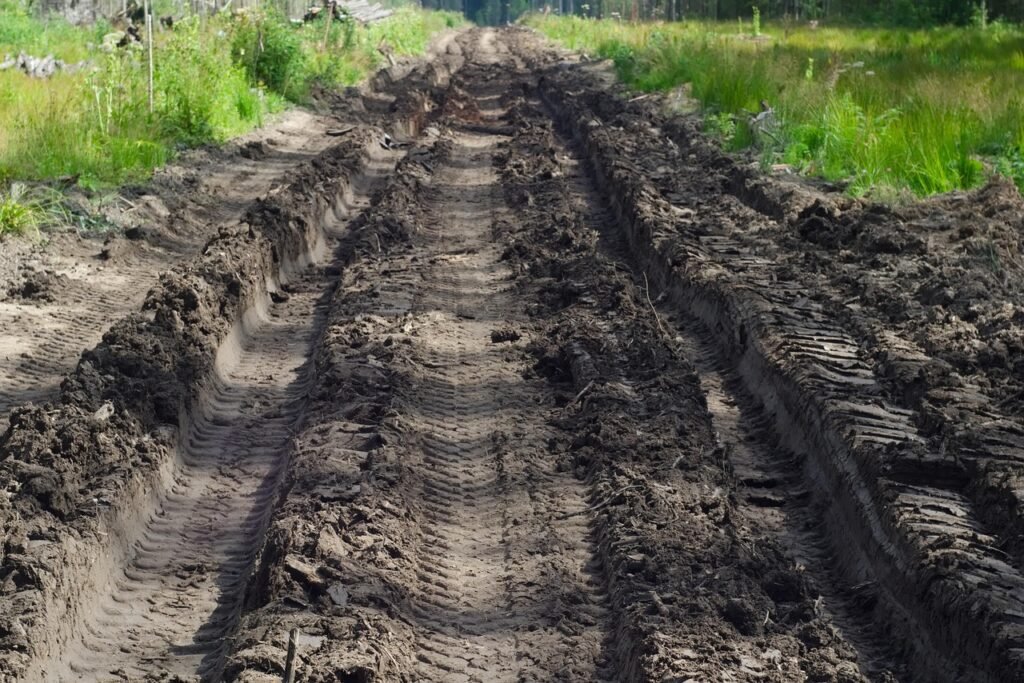
Potential Challenges and Limitations
Substantial Initial Investment Requirements
The primary barrier to asphalt installation remains the significant upfront cost. Depending on location and specifications, asphalt paving costs range from $3-$7 per square foot, compared to $1-$2 per square foot for gravel installation.
This initial investment can strain cash flow for smaller operations, particularly when considering longer lanes or extensive road networks. The cost differential becomes more pronounced for comprehensive farm infrastructure upgrades requiring substantial capital investment.
Professional Installation Requirements
Proper asphalt installation demands professional expertise and specialized equipment. The base preparation phase often represents 40-60% of total project costs, including excavation, aggregate base installation, and proper compaction using commercial-grade machinery.
Weather-dependent installation creates scheduling challenges, as asphalt installation requires dry conditions and temperatures above 50°F. This limits installation windows in many regions to late spring through early fall periods.
Ongoing Maintenance Considerations
While asphalt maintenance occurs less frequently than gravel upkeep, it requires specialized materials and techniques. Crack sealing, pothole repair, and periodic seal coating demand professional-grade materials and application methods.
Freeze-thaw damage in cold climates may develop cracks requiring prompt attention to prevent water infiltration and structural damage. Ignoring minor maintenance issues can result in costly repairs or premature replacement needs.
Site-Specific Installation Challenges
Soil conditions play crucial roles in asphalt performance and installation feasibility. Areas with expansive clay soils, high water tables, or inadequate drainage may require extensive base preparation or may not support asphalt installation.
Equipment access for construction machinery can present challenges in remote rural locations. Heavy paving equipment may have difficulty reaching some farm sites, potentially increasing project costs or limiting installation options.
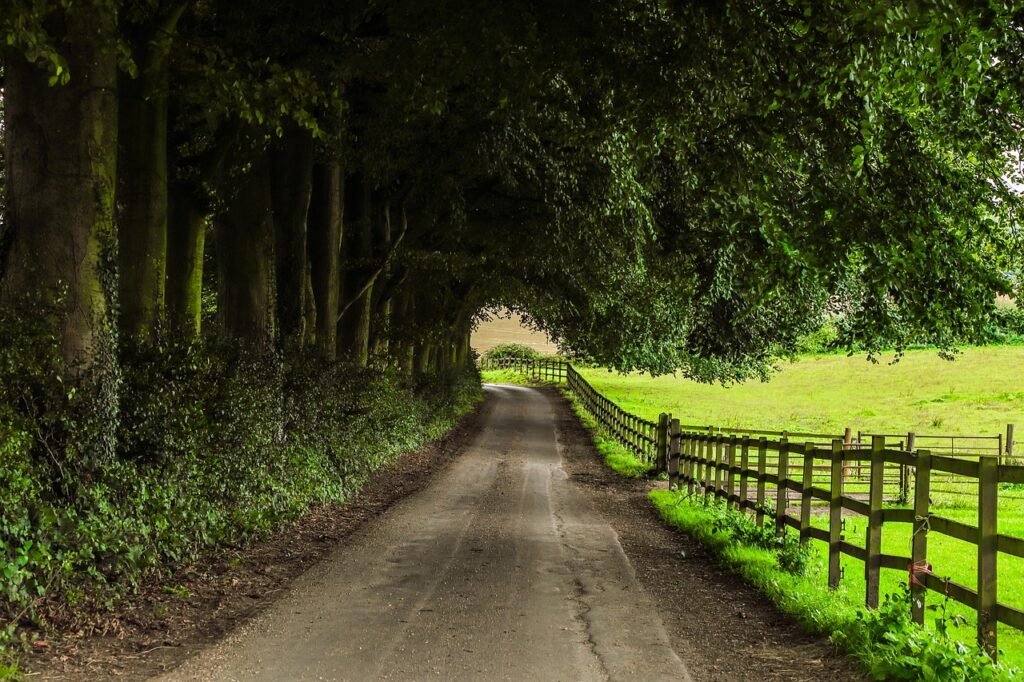
Detailed Cost Calculation Methods
Primary Cost Factors
- Project scale significantly influences per-unit costs, with larger installations benefiting from economies of scale. A 1,000-foot lane typically costs less per linear foot than shorter driveways due to mobilization and setup efficiencies.
- Asphalt thickness requirements directly impact material costs. Standard farm lane specifications require 2-3 inches of asphalt over properly prepared bases, while heavy equipment areas may need 4-inch thickness for adequate load distribution.
- Base preparation complexity varies dramatically based on existing soil conditions. Poor drainage or unstable soils may require extensive excavation and base materials, potentially doubling total project investment.
- Geographic location affects material availability, transportation costs, and labor rates. Rural areas distant from asphalt production facilities may incur higher delivery charges that impact overall project economics.
- Seasonal pricing variations occur throughout construction seasons, with peak periods (late spring and summer) commanding premium rates. Off-season scheduling may provide 10-20% savings where weather permits.
Step-by-Step Calculation Process
- Step 1: Accurate Area Measurement Calculate total square footage by multiplying lane width by length. For example, a typical 12-foot-wide, 1,000-foot farm lane equals 12,000 square feet of surface area.
- Step 2: Determine Required Thickness Standard applications require 2-3 inches of asphalt depth. Heavy equipment traffic areas should specify 3-inch minimum thickness for adequate structural support and longevity.
- Step 3: Calculate Material Quantities Asphalt coverage approximates 80-90 square feet per ton at 2-inch thickness, or 60-70 square feet per ton at 3-inch thickness. Our 12,000 square foot example at 3-inch depth requires approximately 185 tons of asphalt material.
- Step 4: Estimate Base Preparation Costs Base preparation typically requires 4-6 inches of compacted aggregate. Calculate aggregate needs using coverage rates of 120-130 square feet per ton at 4-inch compacted thickness.
- Step 5: Factor Labor and Equipment Expenses Professional installation labor and equipment typically represent 40-60% of material costs. Competitive markets generally price complete installation at $100-$150 per ton of asphalt, including base preparation.
- Step 6: Include Ancillary Project Costs Add 10-15% for permits, utility location services, traffic control, and project management fees that contribute to total project investment.
Realistic Cost Examples
Sample Project: 1,000-foot farm lane, 12 feet wide (12,000 square feet)
- Base preparation and aggregate: $8,000-$12,000
- Asphalt material (185 tons): $11,000-$15,000
- Installation labor and equipment: $12,000-$18,000
- Permits and miscellaneous costs: $1,500-$2,500
- Total Investment Range: $32,500-$47,500
- Cost per square foot: $2.70-$3.95
Regional cost variations can significantly impact these estimates. Areas with abundant aggregate sources and competitive contractor markets may achieve lower-end pricing, while remote locations or challenging site conditions may exceed upper estimates.
Strategic Budgeting Approaches
- Multiple quote procurement helps establish realistic market pricing for your specific project. Obtain at least three detailed proposals to understand local market rates and contractor capabilities.
- Strategic timing can reduce project costs by scheduling during contractors’ slower periods, typically early spring or late fall when weather permits.
- Phased installation strategies allow spreading costs over multiple seasons, focusing initial investment on highest-priority sections or areas with heaviest traffic patterns.
- Flexible payment arrangements may be available through contractors offering seasonal billing or extended payment terms to accommodate agricultural cash flow patterns.
Comprehensive Planning and Site Preparation
Critical Site Assessment Requirements
- Professional soil testing determines load-bearing capacity and drainage characteristics essential for proper design. Poor soil conditions may necessitate soil stabilization or increased base thickness, significantly impacting project budgets.
- Drainage evaluation identifies areas where water accumulates and plans appropriate solutions. Proper drainage design prevents water damage and ensures long-term asphalt performance in challenging conditions.
- Traffic pattern analysis considers the types, weights, and frequency of vehicles using the roadway. Heavy equipment traffic requires robust base preparation and thicker asphalt sections compared to light vehicle applications.
- Utility location services prevent costly and dangerous conflicts with underground infrastructure. Professional utility marking services identify gas, electric, water, and telecommunications lines before excavation begins.
Design Considerations for Farm Applications
- Optimal lane width for farm operations typically ranges from 12-16 feet. Wider lanes accommodate larger equipment but increase material costs proportionally. Consider the largest machinery that will regularly traverse the lane.
- Turning radius planning ensures adequate maneuvering space for large equipment, including grain trucks and combines. These high-stress areas may require reinforced construction to handle turning forces from heavy vehicles.
- Grade and slope optimization maintains gradients between 1-6% for proper drainage and vehicle operation. Steeper grades may require special traction considerations and enhanced drainage design.
- Integration with existing infrastructure ensures smooth transitions to current roads, driveways, and building areas. Proper connections prevent edge deterioration and provide seamless vehicle operation.
Regulatory and Permitting Requirements
- Local zoning compliance may include restrictions on impervious surfaces or special permits for road construction. Research municipal requirements early in the planning process.
- Environmental impact assessment may be required for larger projects, particularly those affecting natural drainage patterns or proximity to water sources.
- Property boundary verification ensures planned roadways remain within property lines or secure necessary easements before construction begins.
Professional Installation Process
Critical Base Preparation Steps
Systematic excavation removes unsuitable soil and organic materials to reach stable subgrade. Excavation depth typically ranges from 8-12 inches, depending on soil conditions and engineering specifications.
Aggregate base installation requires 4-6 inches of properly graded stone compacted to engineering standards. The base provides essential load distribution and helps prevent frost heave damage.
Compaction quality control achieves 95% compaction of aggregate base materials using appropriate vibratory equipment. Inadequate compaction leads to premature asphalt failure and costly repairs.
Professional Asphalt Application
Weather condition requirements mandate dry conditions with air temperatures above 50°F and rising. Installation should avoid periods when precipitation is forecast within 24 hours.
Application methodology utilizes paving machines for uniform thickness and proper initial compaction. Smaller projects may require hand application methods while maintaining quality standards.
Temperature management monitors asphalt temperature during placement and ensures proper compaction while material remains above 250°F for optimal density achievement.
Curing and Initial Traffic Management
Proper curing periods require 24-48 hours before allowing light traffic on new surfaces. Heavy equipment should be restricted for up to one week to prevent rutting and surface damage.
Initial quality inspection identifies any settlement or construction defects within the first month. Prompt attention to minor issues prevents development of more extensive problems.
Our Calculators Categories
Long-Term Maintenance Strategies
Preventive Maintenance Scheduling
Annual inspection protocols conduct comprehensive evaluations each spring to identify winter damage, drainage issues, and areas requiring attention before problems escalate.
Systematic crack sealing performed annually or bi-annually prevents water infiltration that causes structural damage. This cost-effective maintenance dramatically extends overall asphalt service life.
Periodic seal coating applied every 3-5 years protects surfaces from oxidation and wear. This maintenance typically costs $0.15-$0.25 per square foot and provides excellent return on investment.
Common Problem Resolution
Immediate pothole repair prevents expansion and structural damage. Cold patch materials provide temporary solutions, while hot mix asphalt offers permanent repairs matching original construction quality.
Edge maintenance preserves structural integrity by maintaining proper drainage and controlling vegetation growth. Edge sealing may be necessary in high-traffic areas or where water accumulation occurs.
Drainage system maintenance addresses water management issues promptly to prevent structural damage. This may require installing additional infrastructure or regrading adjacent areas.
Replacement Decision Factors
Surface condition assessment evaluates extensive cracking, rutting, or pothole formation that cannot be economically repaired through standard maintenance procedures.
Age-related deterioration typically necessitates replacement after 15-25 years, depending on traffic loads, maintenance history, and environmental exposure conditions.
Overlay alternatives sometimes provide cost-effective solutions by applying new asphalt layers over existing surfaces in suitable structural condition.
Alternative Paving Solutions
Gravel Road Comparisons
Initial cost advantages make gravel installation significantly less expensive, ranging from $8,000-$15,000 per mile compared to $50,000-$100,000 per mile for asphalt construction.
Ongoing maintenance requirements include regular grading, pothole filling, and aggregate replacement costing $1,000-$2,000 annually per mile. Dust control treatments may require additional applications.
Optimal applications include low-traffic areas, temporary access roads, or situations where minimizing initial capital investment takes priority over long-term costs.
Concrete Paving Options
Superior longevity allows concrete surfaces to last 30-40 years with minimal maintenance, potentially providing better long-term value despite higher initial costs.
Cost considerations typically show concrete installation costs 20-30% higher than asphalt but offer superior load-bearing capacity and resistance to heavy equipment damage.
Climate performance varies, with concrete performing excellently in hot climates and heavy-load applications but potentially more susceptible to freeze-thaw damage in cold regions.
Hybrid Paving Solutions
Chip seal applications provide improved surfaces at moderate cost, typically ranging from $1-$2 per square foot installed, offering compromise between gravel and full asphalt.
Selective paving strategies focus asphalt installation on high-traffic areas or problem sections while maintaining gravel surfaces in lower-priority areas.
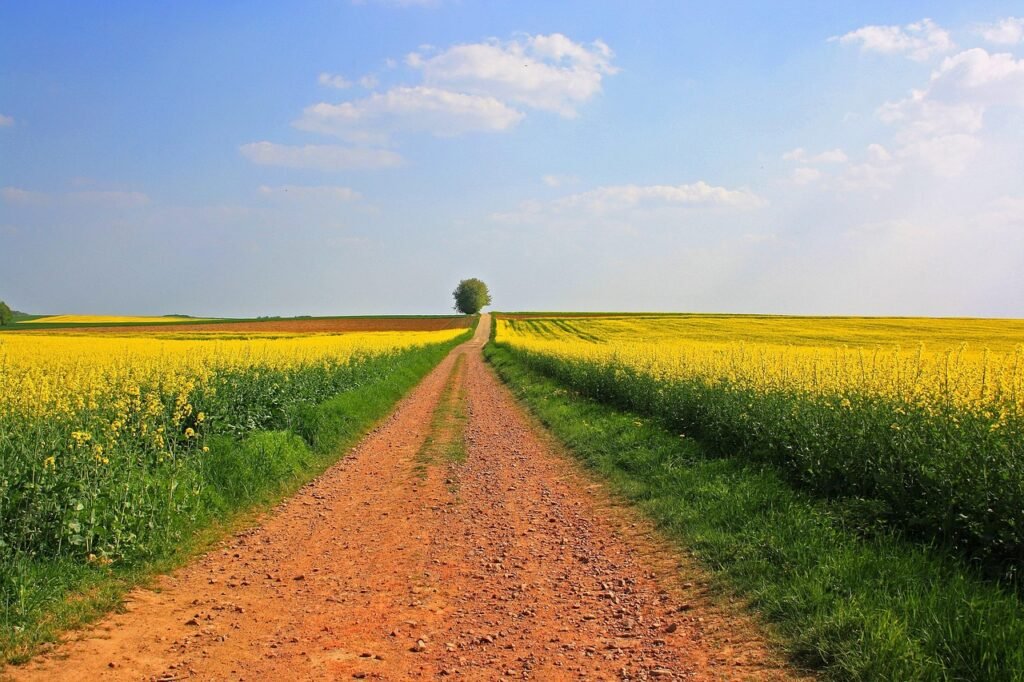
Strategic Decision-Making Framework
Comprehensive Cost-Benefit Analysis
Investment recovery calculations compare annual maintenance savings against initial investment premiums over gravel alternatives to determine realistic payback periods.
Operational benefit quantification includes time savings, reduced vehicle maintenance, improved reliability, and enhanced property accessibility for comprehensive evaluation.
Long-term property value impact considers equity increases and improved marketability when evaluating total investment returns.
Property-Specific Evaluation Criteria
Farm operation requirements analyze traffic patterns, seasonal variations, and critical access needs specific to individual agricultural operations and equipment requirements.
Climate impact assessment evaluates local weather patterns, particularly freeze-thaw cycles and precipitation patterns affecting road performance and maintenance needs.
Future development planning considers potential operational expansion or changes that might affect road requirements and infrastructure investments.
Essential Key Takeaways
- Investment Recovery Timeline: Asphalt for farm lanes requires significant upfront investment ($3-7 per square foot) but typically recovers costs through reduced maintenance and operational benefits within 10-15 years.
- Professional Installation Imperative: Proper base preparation and installation techniques are critical for long-term performance. Compromising installation quality often results in premature failure and higher total costs.
- Maintenance Investment Returns: Regular crack sealing and periodic seal coating can extend asphalt service life by 5-10 years, making preventive maintenance an excellent investment.
- Site Conditions Impact: Soil conditions, drainage requirements, and equipment access significantly affect total project costs. Poor site conditions can double installation expenses.
- Seasonal Timing Strategy: Construction demand and weather windows affect both pricing and contractor availability. Advanced planning enables better scheduling and potentially lower costs.
- Alternative Evaluation: While asphalt paving offers excellent performance, alternatives like chip seal, partial paving, or concrete may be more appropriate for specific applications.
- Long-term Planning: Consider 10-20 year operational plans when making rural road investment decisions. Changes in farming practices or property use may affect infrastructure requirements.
FAQ
Q: How long does asphalt last on farm lanes?
A: Properly installed and maintained asphalt durability typically provides 15-25 years of service life on farm lanes. Longevity depends on traffic volume, maintenance quality, climate conditions, and installation standards.
Q: Can I install asphalt myself?
A: While minor patch repairs can be DIY projects, professional asphalt installation requires specialized equipment and expertise. Base preparation and proper compaction are critical for performance and typically demand commercial-grade machinery.
Q: What’s the minimum temperature for asphalt installation?
A: Asphalt installation should occur when air temperatures exceed 50°F and are rising, with no precipitation forecast for 24 hours. Hot mix asphalt performs optimally when installed in temperatures above 60°F.
Q: How much does asphalt maintenance cost annually?
A: Annual maintenance costs typically range from $200-500 per mile after initial curing. This includes crack sealing, minor repairs, and periodic seal coating applications.
Q: Is recycled asphalt a good option for farm lanes?
A: Recycled asphalt pavement (RAP) can provide excellent, cost-effective solutions for farm lanes with moderate traffic. While not as smooth as virgin asphalt, it offers good durability at significantly reduced cost.
Q: How do I choose between 2-inch and 3-inch asphalt thickness?
A: Choose 3-inch thickness for heavy equipment traffic (loaded grain trucks, large tractors), high-traffic areas, or poor soil conditions. 2-inch thickness adequately serves light vehicle traffic and well-prepared bases.
Q: Can asphalt be installed over existing gravel?
A: Existing gravel can sometimes serve as partial base preparation, but it must be properly graded, compacted, and may need additional aggregate. Professional assessment determines if existing gravel meets structural requirements.
Q: What’s the difference between hot mix and cold mix asphalt?
A: Hot mix asphalt is produced at high temperatures and provides superior durability and longevity. Cold mix asphalt can be applied in cooler weather and costs less but doesn’t match the performance or traffic-handling capacity of hot mix.
Q: How does asphalt perform in freeze-thaw climates?
A: Properly installed asphalt performs well in freeze-thaw climates when adequate drainage is provided and regular crack sealing is maintained. Water infiltration through cracks represents the primary cause of freeze-thaw damage.
Q: Should I seal coat my asphalt farm lane?
A: Seal coating every 3-5 years protects asphalt from oxidation and extends service life. For farm lanes with heavy equipment traffic, seal coating provides excellent value for the investment.
Q: What factors affect asphalt paving costs the most?
A: Major cost factors include project size, required thickness, base preparation complexity, geographic location, and seasonal timing. Site access and soil conditions can significantly impact total investment requirements.
Q: How do I find qualified asphalt contractors?
A: Research contractors with specific farm lane paving experience, verify licensing and insurance, obtain references from recent agricultural projects, and ensure they understand heavy equipment load requirements.
Additional Professional Resources
Contractor Selection Criteria: Prioritize contractors with demonstrated farm road construction experience, proper licensing, comprehensive insurance coverage, and references from recent agricultural paving projects.
Material Specification Guidelines: Work with contractors to specify appropriate materials for your traffic requirements, climate conditions, and expected service life goals.
Maintenance Planning Resources: Develop comprehensive maintenance schedules and budget appropriately for ongoing care, including annual inspections, crack sealing, and periodic seal coating.
Regulatory Compliance: Research local permitting requirements, zoning restrictions, and environmental regulations that may affect your rural road construction project.
Professional Engineering Consultation: Consider hiring civil engineers for complex projects, challenging site conditions, or installations requiring specialized drainage or structural design.
By carefully evaluating these comprehensive factors and following proper planning and installation procedures, asphalt for farm lanes can provide decades of reliable, cost-effective service for your agricultural road infrastructure investment.








